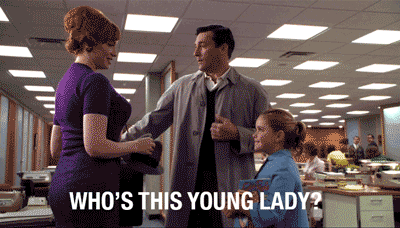We’ve all heard the one “If you’re not the customer then you’re the product being sold.” Well guess what – it’s painfully true. Twitter, Facebook and all those other social media platforms don’t specifically exist to give you warm fuzzy feelings when confronted with a cat doing something cute. They’re there to make bundles of cold hard cash selling your eyeballs to advertisers. I gave £5.89 to twitter and here’s what I learned.
1) Always check out your ad on multiple devices before running a campaign. Seriously, a lot of devices.
I decided to run a topical ad the day after Carlsberg was plastered all over social media with their “Probably the best poster in the world” stunt (a Shoreditch-based poster which dispensed free beer). I was going to use some borrowed interest to make myself relevant and funny. Unfortunately, while my ad looked acceptable enough in photoshop and on a PC screen, I later found out that it looked like shit on any mobile device. Huge mistake. Why did I not check this out before running the ad? Because I didn’t give it any consideration. Check out your ad on several iOS and Android screens before even thinking of hitting the go switch.
2) Consider what you’re CTA and business aims are.
My ad didn’t really have any Call To Action, or any business aims beyond making people laugh and maybe, just maybe crossing the eyes of a few ECDs. Then six months down the line when they’re reading my portfolio, some tiny unconcious bias creeps in, a few neurons remember the name of David Felton, and BAM – I’m drinking beers on a beach while we shoot a commercial for the Hawaii Tourist Board. But you should have less nebulous aims that that. Luckily, Twitter spoon-feeds you across the entire process and lets you customise your campaign to drive traffic, raise awareness, promote sharing and clicks or whatever you fancy. Here’s a big learning on my part: advertising on twitter is an extremely simple process. They could not make it any easier for you. It’s almost as if they want your money or something.
3) It’s true, adlanders all have iPhones and Macs.
There’s a bit of a cliche across the ad world that we’re all a bunch of Mac loving, iPhone using, Apple junkies. Personally, I’m fine with anything; I like my four-year old piece of shit Samsung phone, but I’m also not saying no to a brand new MacBook Pro at work if someone offers. Well the rumours are true. Out of 574 impressions, 505 were from iOS users. Even more shocking out of the 102 people who clicked or interacted with my ad, 100 were Apple users. That’s 98%. Now this leads to an interesting question – did my ad reach such a disproportionally high number of iOS users because I specifically targeted the advertising industry using industry keywords and accounts only followed by ad people, or because iOS users are more likely to interact with advertising? I’m veering towards the former, although there’s plenty of solid quantifiable evidence out there that Apple users spend more on apps, use more apps, and are willing to pay more for an app on average. Do they take this willingness forward when it comes to their relationship with advertising too?
Conclusion
It was good fun running my own miniature campaign on twitter, even if only reached 574 people and cost £5.89. My engagement rate of 18% was very high, well above the industry average based on any metric I’ve seen. However, I’m not sure it was high for a good reason – my dark and basically illegible ad, was a great example of a lack of preparation and it’s not too hard to imagine people clicking on it just to simply try to see what was going on.
The great thing about online adverting is there’s no minimum spend. It’s not like print where you need a media buyer, an agency and deep pockets just to get started. You could literally run a campaign where you only spent $5 per day. So my advice – give it a try. You can play around with being the client for the price of a cup of coffee.


























